Connections
These are just a very few selections from the many communities of change that are working for the good of all of us!
Please help me to make sure there are only active links here by reporting malfunctioning links to holdema@comcast.net. Thank you!
Avoiding toxics
- A mom and scientist talk toxins and babies
- Avoiding environmental toxins
- Cancer prevention and education society
- Cancer prevention tips
- Center for Green Chemistry and Green Engineering
- Civil Eats
- Center for the Environment, Health and Justice
- Collaborative on Health and the Environment
- Health and the Environment
- Natural Resources Defense Council
- Northwest Coalition for Alternatives to Pesticides
- Organic lawn care
- Pesticide Action Network
- Science and Environmental Health Network
- Skin deep
- Sustainable table
Consumer Info
- Antibiotic use
- Backyard bee hives
- Center for media and democracy
- Clean clothes campaign
- Do Not Buy List
- Electronic Frontier Foundation
- Environmental working group
- Ethical Consumer
- Ethical Jewelers
- Ethical Markets
- Food Myths
- Global Exchange
- Green jobs
- Green living toolkit
- Healthy and sustainable seafood choices
- Health care professions in rural areas
- Health Observatory
- Healthy Stuff
- Institute for responsible technology
- Light Pollution
- Natural Resources Defense Council
- Ocean Alliance
- Organic consumers association
- Organic lawn care
- Pesticide Action Network
- Safer Chemicals, Healthy Families
- Skin deep
- Spellcasters
- Sustainable table
- The Story of Stuff
- Toy safety
- Water footprint
- What’s on my food?
- Women’s Health and the Environment
Democracy and Justice
- Alliance for Democracy
- Center for media and democracy
- Clean clothes campaign
- Corporate watch
- Doctors without Borders
- Economic Policy Institute
- Ethical Consumer
- Global Exchange
- Good Jobs First
- Greensboro “Council of Elders” Declaration
- The Campaign Legal Center
- The International Forum on Globalization
- The Sum of Us
- World Business Academy
Environmental Justice
- “A voice for the voiceless”
- A Thousand Suns
- Afloat
- Alliance for Democracy
- Arava Institute for Environmental Studies
- Asian Pacific Environmental Network
- Celsa Vadovinos environmental justice award
- Center for the Environment, Health and Justice
- Central Asia Institute
- Climate Justice
- Deep South Center for Environmental Justice
- Eco-Justice Ministries
- Economic Policy Institute
- Environmental Law Alliance Worldwide
- Ethical globalization and climate change
- Fighting for Survival
- Food First
- Global Exchange
- Idle No More
- UN statement on sustainable development
Farms and Gardens
- Agroecology
- Alvord Museum
- American Farmland Trust
- Backyard bee hives
- City slicker farms
- Cornucopia Institute
- Food First
- Food Myths
- Friends of Trees
- Institute for Agriculture and Trade Policy
- Northwest Coalition for Alternatives to Pesticides
- Organic consumers association
- Permaculture
- Permaculture Activist
- Permaculture institute
- Pesticide Action Network
- Plants for a future
- Sprouts in the sidewalk
- Slow Food International
- Suburban permaculture
- Sustainable table
- Terra Madre International Community Gardens
- The future of food
- The Land Institute
- Traditional Hawaiian ecological practices
- Wild foods and medicines/Pacific NW ethnobotany
- Willamette Farm and Food Coalition
Health and healing
- Arts and Healing
- Breast Cancer Action
- Collaborative on Health and the Environment
- Comprehensive rural health project
- Dieticians for Professional Integrity
- Doctors without Borders
- Environmental Health News
- Equine Facilitated Mental Health Association
- Health and Environment Alliance
- Health and the Environment
- Health care professions in rural areas
- Health Care without Harm
- Health Observatory
- Henriette’s Herbal Homepage
- Hope Meadows
- International psychiatric rights
- Literature for all of us
- Mesothelioma/asbestos
- Physicians for social responsibility
- The Secret History of the War on Cancer
Indigenous peoples
- “A voice for the voiceless”
- Alianza Arkana
- A Thousand Suns
- Columbia River Intertribal Fishing Commission
- COMPAS endogenous development
- En’owkin Centre and Jeanette Armstrong
- First Nations: Land rights and environmentalism, B.C.
- Idle No More
- Indigenous environmental network
- Indigenous knowledge
- Indigenous Peoples and climate change
- International Working Group for Indigenous Affairs
- KAHEA Hawaiian Environmental Alliance
- Mapuche International
- Native Daily Network
- Native village
- Rights of Mother Earth
- Surui Amazonian activist
- Survival International
- Terralingua
- The Thirteen Indigenous Grandmothers
- Traditional Hawaiian ecological practices
- Wisdom of the Elders
Science
- 350.org
- Biomimicry Institute
- Biosafety Information Center (Third world network)
- Center for Green Chemistry and Green Engineering
- COACH
- Columbia River Intertribal Fishing Commission
- Desmog Blog
- Environmental working group
- Equity for women scientists
- Green chemistry
- Green engineering and chemistry
- Integrity in Science
- Intergovernmental Panel on Climate Change
- Physicians for social responsibility
- Reproductive health technologies project
- Science and Environmental Health Network
- Science, Technology, and Ecology
- The Sea Around Us Project
- Union of Concerned Scientists
- Water footprint
Vision and action
- 350.org
- Bioneers
- British Columbia Environmental Network
- Central Asia Institute
- CSRwire
- Eco-Justice Ministries
- Economic Policy Institute
- Electronic Frontier Foundation
- Environmental Law Alliance Worldwide
- Ethical Markets
- Fifteen green religious leaders
- Greensboro “Council of Elders” Declaration
- Health Care Professions in Rural Areas
- Idle No More
- International Society for Ecology and Culture
- Natural Resources Defense Council
- No Impact Man
- Ocean Alliance
- Onward Oregon
- Owens Foundation for Wildlife Conservation
- Pachamama Alliance
- Pesticide Action Network
- Resurgence
- Salmon Nation
- Science, Technology, and Ecology
- The Emily Fund for a better world
- The Fresh Water Trust
- The Sum of Us
- The Thirteen Indigenous Grandmothers
- The village of arts and humanities
- Transformative Change
- Wangari Maathai and the Greenbelt Movement
- Wildthings
- World Conservation Congress
- Yes Magazine
Women’ s Issues
- A mom and scientist talk toxins and babies
- COACH
- Code Pink
- Ecofeminism
- The Emily Fund for a better world
- Equity for women scientists
- Feminist philosophers blog
- Men Against Violence Toward Women
- Moms rising
- National Women’s Health Network
- Population: “Women are the solution, not the problem”
- Raging Grannies International
- Still Killing Us Softly
- Suppressed History Archives
- The Thirteen Indigenous Grandmothers
- UN campaign to end violence against women
- Vandana Shiva interview
- Wildthings
- Women’s Health and the Environment
- Women’s Voices for the Earth
- World Gender Gap Report
- World Pulse magazine
Films
- A mom and scientist talk toxins and babies
- A Thousand Suns
- Afloat
- Al Gore on Averting Climate Change
- Ancestral Voices
- Bhutan and “gross national happiness”
- Fighting for Survival
- Food Myths
- Heat
- Hot Politics
- Mary Tucker: Reciprocity and Restraint
- Still Killing Us Softly
- Spellcasters
- The Secret History of the War on Cancer
- The Story of Bottled Water
- The Story of Citizens United
- The Story of Stuff
- UN Earth Summit talk by twelve year old Severn Suzuki
- Vandana Shiva interview
- Worth Dying For




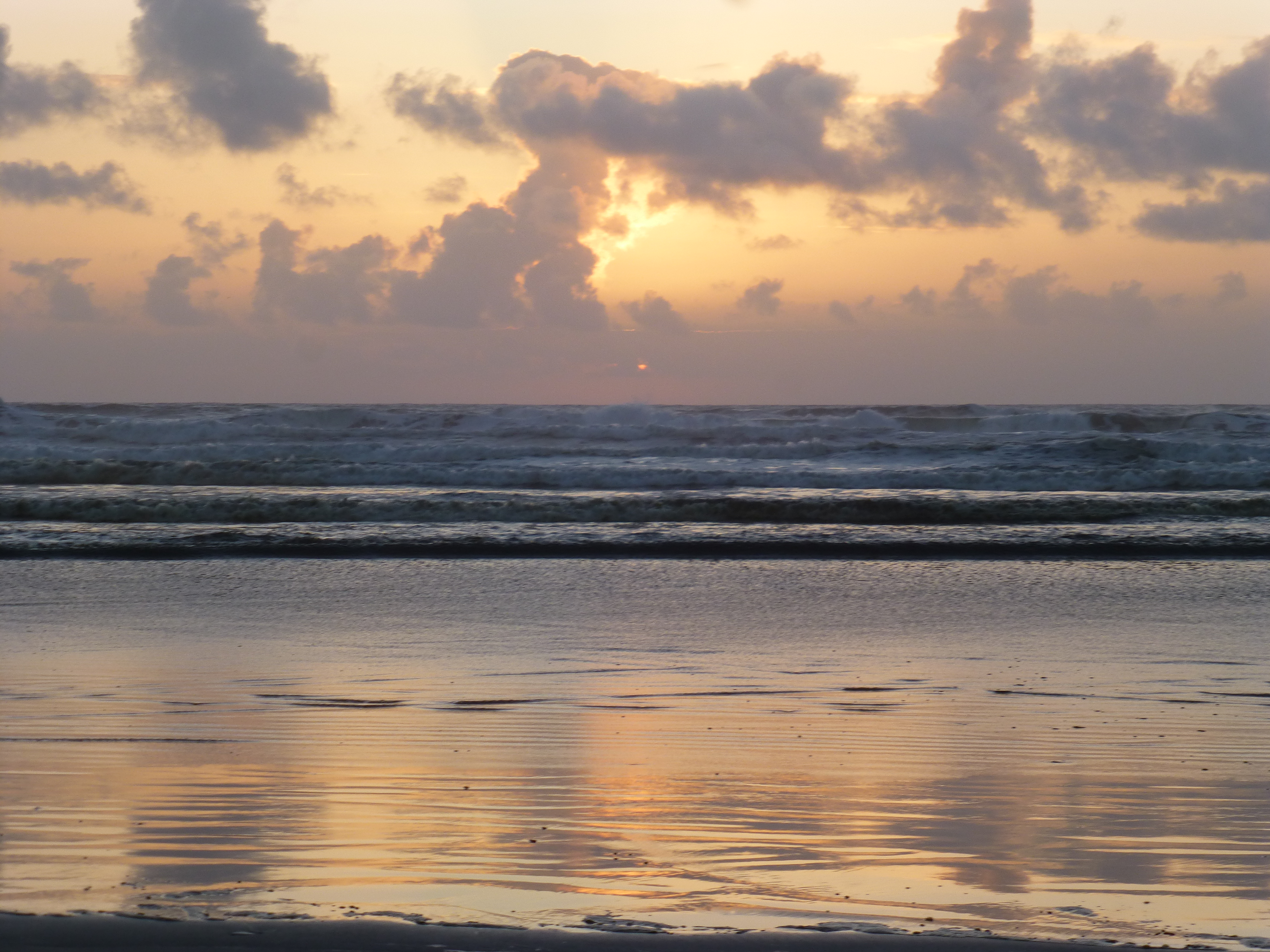










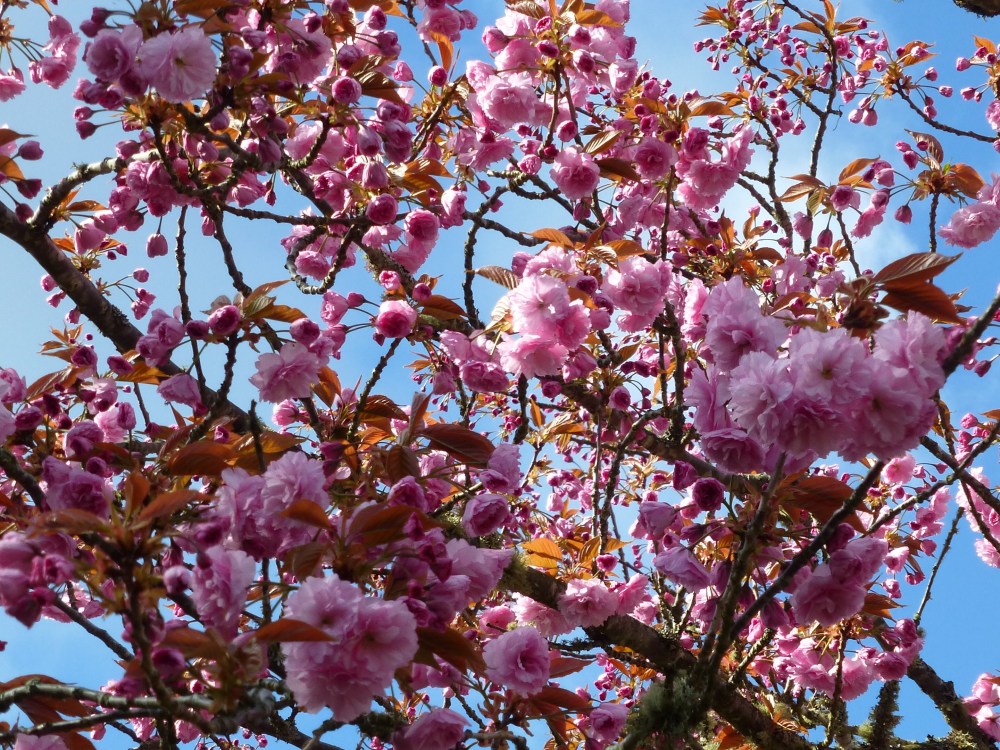










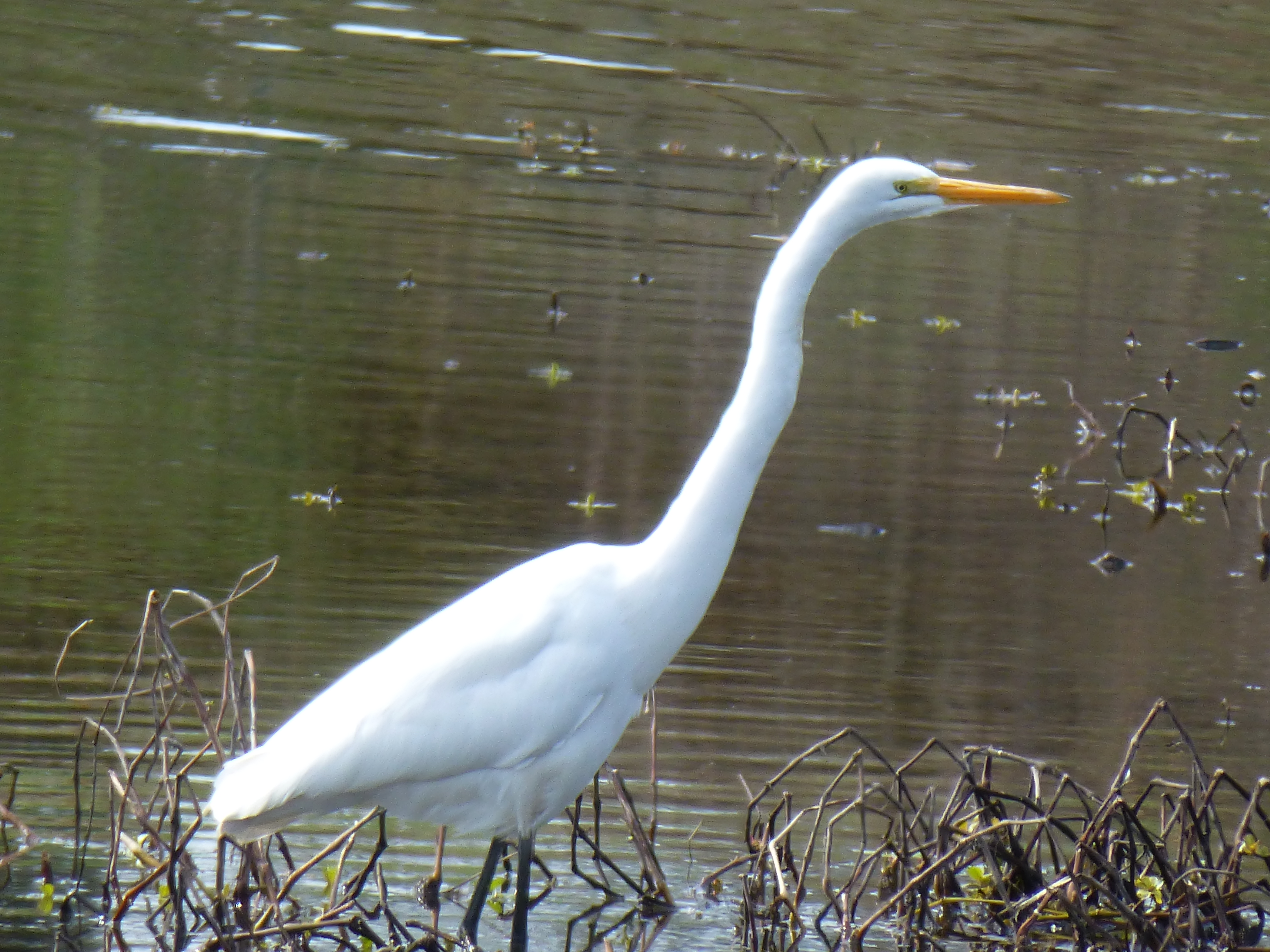
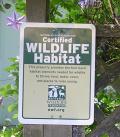






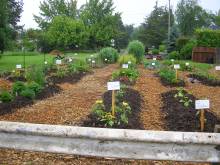
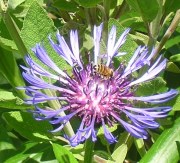



I read up on avoiding environmental toxins, and it really surprised me that we have 400-800 chemicals stored up in our body, no wonder the book Ecofeminism talks about the women of Germany being the driving force against the construction of nuclear power plants in Germany. These women knew the negative affects of these plants and the affects they have on nature and the human body.
Such knowledge is obviously very important as a motivator to action, Kelly. Thanks for the comment.
I read up on women’s health and environment and I also agree that we should be told what is in the products that we consume everyday, especially those that could be harmful if children are in the household.
Ok, so with the hype and the “scare” of the H1N1 I had to read up on the article on antibiotic use. Reading that article really enforced what I have been thinking regarding the flu epidemic that is hitting the United States. I think so many times people freak out when they get sick and think they “need” an antibiotic to fix it. They especially think that they need an antibiotic to fix everything. That is not the case. If you get a cold or the flu, if one takes the proper precautions of washing your hands, staying home if you’re sick, drinking plenty of fluids and taking any over the counter meds to help alleviate the symptoms, one will be ok. I was so happy to read the part in this article about the overuse of antibiotics, how people start using one antibiotic, then they don’t finish that one, they “think” they need another one so they move on to that one, and the vicious cycle repeats itself. In all actuality the person would have been just fine with-out the antibiotics in the first place. People don’t realize what harm they can cause to their bodies by the over-use of antibiotics. Your body is an amazing thing and one doesn’t realize how much immunity we really do have and that our bodies can fight off more than we think.
Overuse of antibiotics is an important topic, Jose. Thanks for sharing this information from the Tufts Medical School site. In fact, antibiotics are only useful against bacteria rather than the viruses that cause colds and flus– indeed, they may cause more problems than they solve, since wiping out all the bacteria in one’s body may compromise your immune system’s ability to fight the flu as well as it might otherwise do.
The only use for antibiotics would be if one had a secondary bacterial infection as a result of the flu– which is up to your doctor to determine.
Thanks for the comment.
I read the City Slicker Farms article and I loved it. It was fabulous to see pictures of community garders in the city. People always think that if you live in the city you can’t have fresh produce, with your own gardern for fruits and veggies. It facinated me to see the “real” pics of the people growning those fruits and veggies in the city. A community garden I feel is a great way for communities to bring people together to provide fresh was to eat, rather than always have “store bought” foods. I always love fresh fruits and veggies, they are so much better whent hey are home-grown.
Hi Jose, these links are not articles (and certainly not written by me), but other sites that you can visit. I love City Slicker Farms myself. I am so glad you did as well. And your comment is an invitation for all to visit!
I am a mother, so I want to keep informed about toy hazards and what toys to buy and what ones to avoid. So having this report easily accessible is really helpful to me. Especially during this time, since it is the holiday season and soon santa will be bringing those christmas toys!
I am not clear what report you are referring to, Trisha: but here is a link all those who are interested in toy safety will want to check out: there is also a link on this site where you can sign up for email toy safety alerts.
I also read about friends of trees. I didn’t know that there was a program that was about planting trees in the urban areas of oregon. I think that this is a really good idea and I plan to be doing more research about this program in the future.
I was drawn to the Code Pink link because I am a member, I have seen Medea Benjamin speak at peace rallies and at the Lane Community College Peace Center, and because this kind of woman’s activism really has made change. Not everyone agrees with Code Pink activists holding their hands dripping in blood in front of Condoleeza Rice’s face while chanting “war criminal”, but I for one applaud them.
I think their work on ending the Israeli occupation of Palestinian territories is especially powerful– they have been sponsoring humanitarian visits to Gaza every since the invasion.
I chose the link Wangari Maathai and the Greenbelt Movement
I LOVE HER~
She is just so incredible. I saw a picture of her walking and holding hands with President Obama before he was campaigning for his run for presidency. This incredible woman not only fights for environmental rights and has devoted her life to planting trees in Africa, but she stands up for women and human rights as well all while promoting peace.
She is a wonderful model for all of us, indeed!
Plants for the future is a really neat website. I learned quite a bit about new edible flowers that could help in medicinal ways that I never thought about before. Also it gave other options instead of taking pills and other medicines.
This website does have some very interesting information, Patricia.
I read up on avoiding environmental toxins, and one of the ways to avoid toxins was by avoiding artificial food and eating organic food. Thus just by being as close as possible to the nature, human can avoid all sorts of toxins in the environment. The nature is the cure!
I agree, Duaa. This standard certainly makes the task of keeping track of the complex chemicals in our environment simpler by looking to organic foods.
I looked at plants for a future and was really surprised to learn that only about 20 species of edible plants make up 90% of our food. I guess it never really occurred to me that you could eat things such as flowers, bark, leaves, etc. At first it seems strange to think about eating these things but really lots of other animals eat them so why shouldn’t we.
Our mono-cropping tendency is certainly linked to our hesitancy to range out a bit in our consumption habits. By contrast, the indigenous peoples of the Northwest were salmon people, but not ONLY salmon people. They used a wide diversity of plant and animal material for subsistence. That not only added nutrients to their diet but security to their subsistence routine (if a salmon run was low, as they periodically are– the salmon run in cycles) there was plenty else to eat. By valuing so many other crops, perhaps we will value diversity once again in the ecological systems we depend on. And though some of these less used plants are an acquired taste, many are delicious! Thanks for your response, Travis.
I read Women’s Health and the Environment and it was good. Since the health begins from the happiness, I think that women are going to reach their best health when the patriarchal world changed into non patriarchal. Women will be happy when there is no objectification by men on them which causes pressure for women who don’t follow the gender scripts.
Indeed, Duaa!
I looked at the website “city slicker farms” and it seemed like a really good concept. I thought it was pretty cool that their mission isn’t just to offer fresh grown produce to people in the city, but also allowing their gardens to be a place where children can came and just hang out. They even offer interships for children and young adults. I think its very good that they involve the community and try to bring the younger generation in.
This is a visionary place indeed, Travis. And the best part of it is that it is a vision that is actualized!
The 1/4 acre property re-visioning in Eugene was inspiring and efficacy-inducing. Not only does urban permaculture seem more possible than before, it actually looks like a fun and educational experience! It’s a win-win-win project!
http://www.suburbanpermaculture.org
Great, Morgan. This property was part of a sustainable gardens tour in Eugene last year: lots of fun to visit as well.
I read about doctors without borders. I had heard about them before but didn’t really know what they did. I learned that they go to other countries usually where there is a natural disaster or military conflict going on and help victims. I thought it was really cool that they remain neutral in all conflicts and care for people that are injured on both sides, rather than just help the side that they favor.
I also think these doctors are wonderful examples of what true healing is all about. Thanks for your comment, Travis.
I looked at avoiding environmental toxins and was shocked to see that 95% of cases of cancer are caused by toxicity in our diet and the environment. Also many of the most common toxins in our food come from how the food is grown or processed, so it can be avoided. It seems that if unnecessary chemicals were avoided when dealing with our food this number would drop and there would be far fewer cases of cancer.
So true, Travis. There is no excuse for not acting to change these cancer rates. Thanks for your comment.
A friend of mine carelessly stopped taking the rest of his prescribed antibiotics, thinking that since he felt better, he was done.
First of all, I agree that antibiotics should be avoided unless the bacteria threaten our lives.
My friend, by not taking all of his pills, only killed most of the harmful bacteria. Since he stopped taking the antibiotics, a few of them most likely survived. Those individual cells that are resistant to the drugs may very well be passed on to someone else, and then to someone else, until they find someone that they can proliferate. When they do, they will all be more resistant to that drug.
In a sense, my friend was handing over our “secrets” to “the enemy.” With our blueprints (knowledge of our antibiotics), they can now mount an even more effective attack.
Absolutely right, Morgan. We must use antibiotics appropriately or lose their effectiveness.
I looked at the site Green Jobs because i think it is a very big deal right now, especially with our current economic funk. It seems that our technology in creating green jobs is increasing more and more each day. Apart from being better for the environment, the fact that it is creating more jobs around the country is a great bonus.
I agree that it is important to blend economy and environmental values, Travis. I hope you found this useful.
I read about the Willamette food and farm coalition and think they offer a very good idea to Lane County. They offer locally grown organic produce that is sold locally. I think it’s great to give people more choices on what kind of food they want to buy and to offer alternatives to commercially grown produce that may not be as desirable.
A great directory of locally grown for the southern Willamette Valley.
The City Slicker Farms website was so cool. It just makes too much sense to empower a community to be self-reliant for their food. They make real, healthy, pesticide-free, high-yield farms right in their very own backyards! If the people of West Oakland can do it, the citizens of Corvallis should have no problem.
I agree, Morgan. I love what City Slicker Farms has done. I love your last statement as a visionary challenge to your own town!
Dr. Holden. I’ve been gathering lists of this type for years, but very few of them are replicated on your list – it’s amazing how many wonderful sources of information there are out there. I’m in love with Gaviotas – I hope to see more communities like this one being developed. One organization I don’t see on your list that I think is just incredible is the Central Asia Institute. https://www.ikat.org/
Greg Mortenson wrote a book called Three Cups of Tea which documents his journey to founding the Central Asia Institute to provide equal education to girls/women in Pakistan and Afghanistan. The work he has done is incredible, as is the influence he has had on his son and daughter. It’s an incredible story.
One I’ve had a difficult time finding is a humanitarian service organization that welcomes the help of people who would like to include their families. I’ve searched through Idealist.org, CARE, the Peace Corps, Global Volunteer Network, etc… as well as all of the big ones with no luck. If you run across one or already know of one, would you mind posting it? I know the work exists as I’ve known of people who have taken their children with them, but I seem to be looking in the wrong areas. Thank you so much for this list 🙂
I think it was Bill Moyers Journal (GREAT program) where I heard about this.
I read through the info on the “What’s On My Food” website and realized what is on the whole food might be what triggers a reaction I have and now my husband has when eating the skin of raw fruits. It is basically an allergic reaction that never happens with canned fruit, only the raw fruit or vegetable. It is astonishing that I am feeding that to my kids. I am not sure I totally trust organic in the store either, but I did find some information on how to wash your raw fruits and vegetables to remove at least the surface waxing and spray residues. Short of growing my own produce, I think it is my only option. Great website, despite my new found paranoia.
I visited Cityslickerfarms because I love to garden. This entire program about educating Oakland to grow balcony herb gardens and backyard veggies is really wonderful. I truly believe everyone should have a garden, especially in places where year round veggies are possible (like Cali) but I also thing every kitchen should come with a solar powered, air conditioned, sun-lamped green house and every home should have its own built in water recycling system.
Wouldn’t that be wonderful? I love City Sliver farms as well!
Well, I just read about a couple girls who have started doing window gardens, hydroponic ones, really cool. They get fresh veggies all year long and live in a city. I joined the web site and I’m going to do it too. I garden anyway, but in Montana our growing season is incredibly short… Think how great this would be for a city like Calgary, Edmonton or Vancouver Canada! You can read about it on NPR.
Great, Michele. This is a fun inspiration for all of us.
I visited the green jobs website but didn’t find anything in my area. Montana doesn’t have much for population, still I would like to find a job that wasn’t helping out some major corporation.
Keep looking!
I am in shock. I am one of those that they talked about that doesn’t trust advertising but to think that they could actually use a means of subverting my conscious to reach my subconscious scares the bejebbies out of me. How can this be legal? Isn’t it a form of brainwashing or programming? How do we know that this isn’t already being used by politicians (like our last presidential campaign) or the TV ads our kids are already being exposed to. I signed the petition but I don’t think a mere petition will stop this. They have too much at stake for it to be buried. It’s another Pandora’s box and that is what scares me the most. Once opened it can never be closed. Who has the power AND initiative to protect us from this horrendous practice. I am so glad we record most of the TV we watch and skip the commercials but they said it’d be on the internet and in stores too. OMG! What can we do.
This is horrid indeed: I understand even before they were measuring kids’ brainwaves in response to certain ads, they were paying groups of very young kids to be audience to trial ads and kept modifying them every time they lost the kids’ attention until they had them “caught”. They has been industry practice for years. I’m with you one hundred per cent on the fact that it should not be legal any more than the subliminal messages outlawed in the 1960s. The Ethical Marketing site has a campaign against this. Let us hope this are successful! Thanks for your comment.
I visited the sustainable table link. The support that schools around the nation are getting from their students in changing school menu options, ridding the halls of soda machines, and switching to recyclable lunch trays has come a long way. I remember when just a few students in one U.S. high school stood up against the soda machines! It made national news. The fact that many of these improvements are student-driven is respectable, and in turn has gained support from parents and the educators alike – and yay! opens doors for grant possibilities for those schools.
I find this student-driven change both heartening and hopeful as well, Mary.
I read the press conference at Indigenous Peoples and Climate Change. Very interesting. Although some of it we have heard in the news (i.e. melting of glaciers and small islands being overcome by rising tides), there were some points addressed that I hadn’t heard or read about: Norway, the lack of snow affecting reindeer herds – a main commerce for their peoples; and the fact that there is more rain than snow during winters in Afghanistan – creating hazards that are eliminating full townships from mudslides, avalanches, and torrents of water coming down mountains (instead of the usual trickle). While we know the climate is changing, and that indigenous people are outstanding in adaption to changing landscapes, what happens when the climate is changing so fast that adaptation to an environment can’t happen quickly enough?
Thanks for passing on information from this site to us here, Mary. Your question brings up the tragedy of climate change and why it is so imperative to address it.
Under Farms and Gardens, I visited Friends of Trees. Wow! I knew that trees were highly beneficial for so many reasons: food, shade, attracting birds, and aesthetic purposes – but to add property value? I did not realize that having trees in front of your house could add (in some areas) up to $9000 property value. I planted for the shade, and now I’m even more happy that I did.
Great, Mary. Enjoy those trees.
I visited the Science category – specifically, Equality for Women Scientists. I liked the idea that Dr. William A. Suk had: “a truly concerted effort on the part of all scientists to mentor and encourage young women scientists starting at an earlier age,” Dr. Suk makes a good statement. If this kind of mentorship was practiced more frequently, it would open doors more easily for those women when they were slightly older, and more deeply entrenched in their science field.
Today I visited Good Jobs First, a group promoting clean, equal employment opportunities and promoting green jobs and green energy. I also visited the Indigenous Conservation areas link in the article Watching over the Commons, and learned about natural conservation and indigenous culture conservation in Kenya.
I visited the Vision & Activism page and read about 15 Green Religious Leaders. Interesting and admirable. That’s the way to get people to learn by example – when they’re listening to “the source”! To teach while on a common ground and pursuit I would think reach people in a straight-to-the-heart fashion.
Lovely point, Mary Lou. I don’t think there is anything better than sharing “straight to the heart” in acknowledging the sacred source of life that we all share.
I visited the Farms and Gardens category and read about City Slicker Farms. I am very glad to see more movements like this happening in Urban areas. What really perked my interest is not just the fact that they landscape – but edible landscaping is something I would love to learn more about.
Great! It is catching on: as I passed my neighbor’s house this morning, I noted they were re-planting their parking strip with veggie starts–as well they might. It is a lovely sunny spot that not only serves them but cheers up our neighborhood.
I visited the Indigenous/Indigenous Knowledge site and read about a book(2 volumes) written of the knowledge of the Mayanga and Miskito tribes – specifically the aquatic world, in a tropical rainforst between Nicaragua and Honduras. “Mayanga Knowledge of the Co-Existence of People and Nature: Fish and Turtles” sounds fascinating – and the two volumes is just their knowledge of the aquatic world! I can’t imagine the extent of their knowledge of botany!
The cummulative knowledge of a people who have lived in residence in an area for so long is amazingly comprehensive, Mary Lou– certainly a treasure we cannot afford to treat light and certainly, we cannot afford to lose it.
I visited the Raging Grannies site. Their Philosophy was delightful!! Funny and to the point. Grannies that quietly protest the “evil doings” of just about anything. Utilizing as they put it, their “innocent grannyism” and unleash their knowledge on unsuspecting foes. These are not the Grandmas of the good ol’ days! Their site is very fun to read!
I think they are fun indeed, Mary Lou. And not quiet about any injustice they see in the world.
I vistited the link http://www.pesticide.org. A website dedicated to get toxic pesticides and herbicides out of our environments. I was especially interested in Neem oil as a pest repellent, but didn’t find anything specific. I did, however, learn that vinegar is a great way to get rid of young weeds in the garden. Although, when they are small, I usually just dig them right up. I wouldn’t spray them with vinegar unless I was sure my other plants wouldn’t get any splash.
I usually try to pull rather than dig my weeds in the spring when the soil is softer (and the plants easier to pull) so I disturb soil composition as little as possible. Sorry I don’t know a good deal about neem.
I visited the site for Green Chemistry and Green Engineering. I didn’t realize that there were companies pursuing these methods. How encouraging to read of companies going in this direction! One of the Green Engineering’s pursuits read that they are pursuing methods that are more economically feasible as well as safe for humans and the environment. First, I liked the safe for humans and environment part, but secondly, economically feasible? very good, because that affects things for the consumer in a positive way.
Great perspective, Mary. Time to make our technology come in line with central values of care and sustainability.
I visited the “Women are the Solution, not the Problem” site in the Population category and read about one of the ways education betters people. In this instance, I read how women of third world countries can reach out by means of the computer and/or internet, obtain education, and leave (in many cases) a violent life behind. They also can inform other women in situations similar to theirs, of ways that they can do the same.
I think these are very important ideas! Thanks for outlining them here.
In the Northwest Coalition for Alternatives to pesticides site – I reviewed their map of parks in four PNW states that they have achieved in helping go pesticide free. It was encouraging to see the great lengths they have gained in having cities take interest in this increasing concern.
The PAN (pesticide action network) that I read about sounds like an uphill battle, but their determination is evident. They have been pursuing action from companies that seem to agree on certain matters, but then turn around and affect our foods in other ways, such as “The Gene Revolution” that manipulates the seeds our food is grown from.
Sometimes it does seem like the progress we are making entails two steps forward and one step back– all the more reason that I admire the persistence of these folks. Thanks for your comment.
I had read Wisdom of the Elders and I was quite impressed with the continuous efforts such organizations have. It was very educating and promising to know and learn that these communities recognize the importance of preserving indigenous knowledge and understanding, and the oral traditions of storytelling. How educating the future of these ways to maintain the protection and connection to our natural world. .
These traditions are treasures to protect indeed.
In reading, Women are the Solution, not the Problem. It was rather disturbing to know what women go through in various countries, the suffering, oppression, and demeaning manners in which they are treated. I have to admit, that education is a great point to bring women above all these inequalities and repression, it would help build strength, independence and knowledge that under no circumstances should a women be overpowered or mistreated.
Great point about the power of education, Francine.
In viewing the Women in Black link, I am always amazed and appreciative of women involved in the assurance of our equality. As a woman, it is very real and true that we all experience these injustices in some form or fashion, on various levels but it is the strength of women like those involved with the Women in Black that bring us closer and closer to justice, peace and equality.
Thanks for sharing your sense of solidarity here, Francine. In expressing our shared values, we express our community with one another, as you indicate.
I read Toy Safety, and I am so glad websites such as Trouble in Toyland exists. Unfortunately, more and more products are being made with less quality for cheap mass production and we are rarely aware of what is really going into that product. I always see all these recalls, especially on toy products or other child care products, on the walls of a store however, having a first hand awareness that parents can view is a precaution they can take before purchasing these products and putting their children at risk.
I guess this is another illustration (along with our environmental carelessness) that shows how little we are acting on behalf of the coming generations. I am heartened that such websites as this show a different value and commitment.
I read about equity for women scientists and it was actually an interesting article to read, even though I don’t consider myself a feminist. I thought it was interesting to see things we could do as a society to improve the overall wellbeing for women and all humans on earth. While noting all the things that are being done by supporting scientists, it’s interesting young women scientists still are not equal to their male counterparts, even when some seem to be more qualified for awards and various positions. Recently, I read an article that was similar to this about how women in Estonia are doing so many things to provide equal opportunity, but still more can be done. Overall, it’s somewhat sad to see things like this still happen in today’s world.
Thanks for your comment, Christopher. The “world gender gap report” sums it up, I think: we are losing a good deal of potential in such unbalanced processes.
I checked out the “Friends of trees” page.
This is definitely something I dig. “Greenifying” (not sure if that’s a word, but it is now, heh) urban centers has been shown to increase the quality of life for the people and animals who live there. I see now where even in some large cities, like New York, abandoned lots are being turned into productive gardens and orchards to provide both an element of beauty and food to the community. If anything, projects like these will highlight the importance of more sustainable living practices even in places that have been largely stripped of their original ecosystem and replaced with concrete.
Hi Mac, the Friends of Tress have done a great job–and there are so many more trees might yet be planted, as you note.
I read environmental toxins. I am very interested in seeing alternatives to the numerous toxins listed within this page, many of which are currently used and are legal. Not only do I personally care about this, and believe that these toxins have much to do with the various illnesses and diseases we are seeing become more prevalent, but also have to do with the increasing rate of allergies and allergic diseases and responses we are seeing in children and adults. We can do away with these, and become far better off than we are now.
I agree with you in the sense of importance of creating alternatives to the release of toxins in our environment, Lizzy.
I read “Fifteen green religious leaders”.
I was surprised to see that there are some prominent representatives of Christianity supporting the green movement. My idea of many Christians was (and still is I’m afraid to say) of a people who generally felt that caring for the environment was something for wimps and “ecoweirdos”.
However, the growing number of church leaders taking up the environmental cause can only be good! People often place more trust in the heads of their faith then they do in politicians for a very good reason. If more of these religious leaders – especially Christians – could advocate for environmentalism, they would help to draw the attention of their adherents towards a far saner (and safer) worldview which stresses our role as members, not “stewards”, of the earth’s ecosystem.
I think you are right about the citizenship approach, Mac. It also heartens me that more world religions are taking this stance.
I visited the Good Jobs First link as it was posted at the end of one of our reading assignments. I was happy to see this website informing people of a new way to sustainable economic growth and development, fair wages, and consumer watch dog groups on harmful government subsidies.
http://noimpactman.typepad.com/
I read Colin’s latest blog with great interest. I wonder though about how much I really agree with him that it would work for people on either side of the political spectrum to join together to solve common issues. It sounds like a marvelous idea, and I would be fully supportive of it, but……I need to say this, and sorry for the cynicism, I just think it’s much easier said than done since such shared concerns are very few in number. Divisions in politics exist for a reason, as does the bickering between parties. While something like feeding the homeless may be a concern of both Democrats and Republics you’re not going to have them approach the issue in the same way. And that discrepancy in approach to solving problems has proven to be a major setback for progress on a social, economic and environmental level.
Getting to the issue of shared concerns is precisely why the folks at the Harvard negotiation project (Getting to Yes) set up a model of “interest-based” negotiation (where you try to find common interests instead of standing on your territory versus the other. This approach is far from automatic in a cultural such as our own, however, it has been yielded much success. One observation of my own is that it works when and if power is equalized between the parties involved: another vote for the partnership approach and for doing something about power imbalances that exist throughout our society.
I watched the Story of Stuff.
Consumerism is becoming or has become more important than anything of true value- such as love, nature, family etc- and it makes me sad to think that my kids (more so other kids because i am trying my hardest to ensure that it doesn’t happen to my kids) will put a greater value on stuff than on love, na ture, family etc. and eventually lose touch with those aspects of life.
I hope that this is not the only possible future for your children’s values, Ely. But it is sad statement on our own. How different this “stuff” than the canoe lovingly carved with heart and lungs that the Chinook rode across the bars in the mouth of the Columbia (as I referenced in my response to your preceding comment).
I read the link CODEPINK and researched the website. I could not believe those women stayed out in front of the White house for 4 MONTHS in the winter. That would have been such a cool site to see 10,000 women surrounding the white house in pink. If that is not inspiring, I don’t know what is.
The Code Pink women are pretty great: check out their upcoming teleconferences with women all over the world.
I read “backyard bee hives” under consumer info. I think what they are doing is awesome. They promote the backyard bee hive and strive to protect and teach about the honeybee. I believe this is great because many people, I think , are scared of bees and kill or knock down bee hives when they see them. In reality, bees are essential to our lives. We need them for pollination, honey, etc. So it is great that they teach about the backyeard bee hive and the helpful things that bees really do.
Some folks don’t also seem to discriminate between honey bees and say, hornets. All stinging insects I know of need to be provoked to sting. And insects like bumblebees rarely if ever sting.
I also read about city slicker farms, under farms and gardens. I think it is great that more farming is going on in urban areas, not only rural. I found it intriging that not only are they doing landscaping, but the edible landscaping too. I think it is neat how they took the idea of farming in rural areas and reinvented it into a form of beautiful landscape, suitable for urban areas too.
There IS more and more agriculture being done in urban areas– a hopeful point, since that is where many of us live–and where small gardens can make a huge difference in quality of life.
I read about the organic lawn care which was very interesting because with my landscape business we have been practicing quite a bit of these practices on our customers lawns. We only use granulated fertilizer upon request and otherwise we use the compost we have created from the grass clipping and other debris to top dress the lawns and add nutrients.
Great, Jake. Home lawn care is one of the worst offenders in terms of spreading toxins in the environment– thanks for making a difference in this.
I looked at the Pesticide action network and it was very interesting to see how many alternatives they have come up with to solve the same problem without using pesticides.
It is great that so many alternatives are available–given the harms that pesticides are doing on so many levels.
I read the ethical consumer website and I was amazed about how much information there was about purchasing sustainable products. It is too bad that more people do not know about this.
I looked at the corporate watch and I am interested to know how some of these corporations get away with some of the things they do even thought they are so large and exposed.
Unfortunately, our laws favor this–as in the recent Supreme Court decision that gave corporations the rights of persons.
I read the site about “green jobs” and it is crazy how many jobs there are available that I have never even heard of before. This site show me that we are moving in the right direction with these positions.
Great. A “green” lawn business also seems a move in the right direction.
Good evening – I visited the backyardhive.com site. I’ve always thought beekeeping to be interesting as well as valuable, and this site is geared to the non-professional, “garden” beekeeper. Very neat!
Great! I also like this site for its care for bees (rather than merely working them as a business),.
I also just visited the site on antibiotics use (http://www.tufts.edu/med/apua/about_issue/antibiotic_res.shtml). I found this very interesting, as many doctors will hand out antibiotics for any little thing rather than let the body attempt to heal itself. If the body can fight off a bug, it can be stronger for when another hits. But if antibiotics are used as a first response, the body won’t build up a resistance, and at some point antibiotics will cease in effectiveness. A basic illness would then require even STRONGER antibiotics as a result.
A negative feedback loop: I think there is a change in the easy passing out of antibiotics, which should be reserved for situations in which the body is not able to help itself– and certainly should not be fed to well animals to make them gain weight faster– or withstand crowded conditions without succumbing to disease.
I visited 350.org as well. I had heard of the organization previously, but this gave me an opportunity to delve into it a bit more. This mission is straightforward: get the planet from 393ppm of CO2 down to 350ppm. This organization uses the power of social networking to inform its members, and it looks for innovative ways to get people involved in the efforts to reduce global warming. What an interesting group!
I went to the heat website about the film. Interesting about how corporations are getting involved in this stuff. Carbon emissions are starting to cause huge impacts on the environment, and something has to change to fix the problem.
Something has to change indeed and we are the ones to change it.
Avoiding Enviornment Toxins – Interesting article on the amount of toxins that are circling throughout North America. I had no idea over 3,000 chemicals are added to our food supply.
Something we need to change– meanwhile information can help us make our choices known to businesses according to what we purchase.
Toy Safety – Interesting webpage showing examples of toys with safety violations. First link I clicked showed a childrens book with 200 times the legal limit of lead in its paint, ridiculous.
Ridiculous and tragic, given the effects of lead on children’s nervous systems. Thanks for your response here.
Consumer Info – Green Jobs. Cool website where you can search for green jobs. This could benefit me because im graduating after fall term and plan on working in construction.
Great, Troy.
Professor Holden, I watched the TED talk from Al Gore on averting a climate crises. In the speech Al Gore addressed something that many people who want to make a change struggle with: What can I do to make a difference in combating climate change? He stressed efficiency and becoming ‘carbon neutral’, as well as pushing for a “cap and trade” carbon emissions system whereby the market would work FOR lowering carbon emissions instead of working against it.
Professor Holden, I visited the site http://www.goodjobsfirst.org and then found a link to green jobs which I thought would be extremely informative and interesting because upon my graduation I would like to pursue an environmentally-related job where I feel I could make a difference. I found the term ‘green strings’ added to job subsidies would open the door for any number of jobs to be considered ‘green’ if done in the correct manner, but currently there is a tragic disconnect that highlights the habits of inefficiency and waste that governments local, state, and federal continue to express.
I visited the DO NOT BUY LIST and the thing that i found the most important is that 100% of children’s face paints tested by the Environmental Working Group contain lead. I wish i would have know that before Halloween. I am defiantly getting my daughter regular makeup this year.
It is great that you are protecting your daughter in this way– and don’t buy her lipstick for next Halloween, since it has lead in it as well.
I visited the website on antibiotic use. I am interested in antibiotics because they account for 90% of the cells in the human body (we are a vessel for them) and because they are invisable but have so much influence on our world. I just heard that microbiologists want to do some pilot projects also to apply them in climate change models. Accoridng to this website, 80-90% of the antibiotics we ingest are eliminated into the natural environment unchanged, thereby affecting microbial communities. Antibiotic abuse has resulted in microbes developing resistence to antibiotics, resulting in complete alterations to microbial communities.
This 80-90 per cent figure of antibiotic pass through is alarming enough if counted with respect to proper use of antibiotics in the rare situations in which they are truly indicated– when we take into account feeding livestock antibiotics to allow them to survive feed lots and crowded chicken coops , it is inexcusable.
Important consideration about microbiocal communities–and in fact, we ourselves are over 90 per cent non-human DNA (consisted of various one celled creatures without which our bodies could not survive).
I also visited the website on Institute for Agriculture and Food Policy, specifically reading the article on India’s new water policy and how it could accelerate privatization of water at the global scale. According to this article, associated links and commentary, water as an economic good is valued higher than it as a human right. Since water used in manufactured products results in higher economic production than water used for agriculture, manufacturers could afford to pay more for water and outcompete the agricultural sector in food- and water-impoverished areas. Overall, India’s policy could set the stage for how water is valued throughout the world, because it sets dangerous precedent at a big scale (India’s population is huge).
Something to consider for sure, Mary. Perhaps you also know that corporations like Nestle’s are buying up water rights worldwide, including in the US?
I watched “Gross National Happiness-Bhutan.” I have to say that it was so refreshing to see a King caring so much for the happiness of its people through all the right avenues (care for its land, education, tradition, and health).
Great, Jessica! It would indeed be great to see leadership expressed through such values anywhere!
I read the cancer prevention tips. I wouldn’t be surprised if upon birth, children already have cancer causing agents in them with the chemicals that are in an industrialized society. Good pointers.
Sadly so, Mary: the amniotic fluid of pregnant women throughout the US have these kinds of toxins. Time to get them out of our environment!
I read the article about urban agriculture in Cuba, and I think it’s a great example of how each of us can do something to use earth’s resources wisely, no matter where we live or what our circumstances are.
Henry B. Clemons,Jr. says have read some of the subject article here in,saving planet earth ,its good environment,its good food resources for mankind is with in humans circumstances.Yes we can live better and more healthy.More reading of home subject matter is good for all.
I watched the TED video under “A mom and a scientist talk about toxins and babies” and I totally agree with what they are saying. There is a lot of talk about what we do to the environment but we don’t talk much about what the environment is doing to us and to our future children. I think it is really important for mothers to be buying BPA-free products for their children and to pay attention to some of the things we put into our bodies.
There is much excellent information here that should certainly urge us to fight for an upgrade of the toxics chemicals laws in Congress!
I also watched the video on “Food myths”. I think the woman has wonderful points about pesticides, sustainable farming and about agriculture in general. I am skeptical about our ability to feed the world in 2050 though with something she didn’t mention – the willingness of people to become farmers. I actually have family that are farmers and their children are wanting to go do more profitable work, to make more money and not have to work on weekends. How do we create food without farmers?
Once again, good information is important in making these decisions– and obviously, we need to protect the health of both farmers and the land.
I just read data that indicated that farmer’s are at risk (on a four times basis) for cancer because of their handling of pesticides.
This should never be–and an argument for organic farming.
I read the link about How to avoid environmental toxins and i was amazed at how much toxins we consume. I never really took into consideration of how much we intake in our food and never really think about it.
I am glad you have some additional now, Jason.
I read about the “Backyard Bee Hives” and I find it extremely important that we increase the diversity of bees as they help pollinate all types of plants that add to the beauty of the Earth. When I can, I try to support local beehives by purchasing some of the organic raw honey that is sold at the Corvallis Saturday Indoor Market.
Great, Ruth. Stopping pesticide use and increasing pollen plantings are other things you can do to help.
I read about “Arts and Healing” and I realized I never knew there were so many reasons to create art. I had heard about art being used for healing or way of trying to communicate with those that suffer from dementia or other mental illness, and I understand how it could help by training the mind to free itself from the world.
Or to understand and create alternative ways of thinking as well as getting to deep feelings. Art is an integral part of healing in many cultures!
I watched the interview with Dr. Shiva and was really surprised to hear about the farmers who committed suicide because of genetically engineered seeds. The false advertising and the pest control that doesn’t work is incredibly wrong. It is even worse that the male farmers drink pesticide to kill themselves.
I am with you on this, Denise. Thanks for emphasizing these points.
I visited the Pesticide Action Network and found that building a community can have positive and lasting effects on creating change! Some of the essays we read make it feel like the number of people trying to change are so few. What a great way to promote change by creating a community that feels the same! Maybe that community could lead to a committee…
I hope that the essays here also have their encouraging side: there are so many involved in positive chang3e that fall below standard media radar.
The environmental working groups ‘skin deep’ site is a great resource to help educate us to reduce the toxins we put on ourselves everyday with our cosmetics, soaps, shampoos etc. I’ll be referring back to this site the next time I need to purchase new shampoo or makeup.
Great, Gina. It is great that we have such info available to us.
I also read Ethical Consumer and got sidetracked on so many different options. Most ethical laptops, insurance, and banking accounts! It is awesome that the UK has something like this. I will have to do my research to see what we have similar to us here in the US. Apparently there is an Amazon boycott, who knew?
Thanks for your response, Jamie. Information is a key to making ethical choices as consumers– wo that we can answer your question, “Who Knew”, with “We Knew”. And one place to look for US info on corporations is here: http://sumofus.org/
Skin Deep’s is an informative website that alters the consumer on harmful chemicals that are placed in some of your everyday personal care.
Important information to know. Thanks for the note, Kim.
Organic Consumers Association is a great site to find out the latest news on organic food to the environment, I am a subscriber to http://www.organicconsumers.org/ that keeps you updated on many important issues every consumer needs to know
Thanks for sharing this info, Kim. It is important to stay informed about growing and labeling “organic” for the sake of both human health and the environment.
Organic Lawn Care has several tips to prevent harmful chemicals and products from being a necessity in your gardening lifestyle.
Tips that are the more timely now that spring is here and we want to be outside in our yards. Thanks, Jamie.
Light pollution is a growing concern due to several populations wasting vast amounts of energy after dark.
Not to mention, data that has directly linked night shift workers with increased chance of breast cancer and migrating birds and turtles dying because of miscues from lighted buildings
I read the link on the Men Against Violence Toward Women and I was so pleased to see how much support there is for us women from our male counterparts! I took a class in Masculinity and we talked a lot about this kind of thing and I am glad it is really starting to become a realized issue.
I find it hopeful that information is being shared in such classes–and so many men are stepping up to help counter violence against women– or even just violence children face on some inner city streets, such as the vets who simply stand on dangerous street corners children have to pass on the way to school. Their courageous presence makes all the difference in these children’s safety.
I went to the “Future of food” website, which is all about the GMOs in our food, this issue is so important for everyone that consumes food on this planet, you must visit this site before you take your next bite of food.
Nice point with respect to what we put in our mouths, Kim!
I went to the corporatewatch.org and found out that the biggest international food processors are Procter and Gamble, Cargill, Kraft, Nestle, and Altria (formerly Philip Morris).
Thanks for sharing this. And this site also has some info on the ethics and health consequences of the actions of these corporate giants– whose earnings often surpass that of numerous whole countries.
http://www.friendsofgaviotas.org/Home.html
I read the page for Friends of Gaviotas and I thought it was wonderful to see a community working together for a greener lifestyle where everyone from scientists to artists plant trees and everyone enjoys free housing with no mayor!
Gaviotas is inspiring indeed! I think it says a bit about what all humans are capable of achieving.
The green living tool kit link is wonderful for finding ways to make your everyday activities a bit greener. Even the little things can make a difference.
Indeed, it is the little things that add up to the big ones, Gina.
After reading through the myths list of cosmetic safety on the skin deep website, I have to admit I am a little perturbed. I was completely unaware how unregulated the ingredients in cosmetics are. The tips for using safer cosmetic products will be very useful in cleaning out my bathroom cabinet.
I’m glad you found this useful. Given the lack of action in regulating such products, it is wonderful that non-profits exist to evaluate these products and share the info.
it is quite bothersome, isn’t it? I stopped using any products and only have some organic mineral makeup for important things (like my wedding…) have fun decluttering!
I really appreciate the work that Doctors without Borders does. I have a few friends that have gone to underprivileged areas as nurses and midwives to help people there and to assist with supplies and training. I don’t know that I have it in me to really understand what it’s like in some of those places, but I deeply appreciate those who go and do for others who have very little.
Doctors without Borders is truly inspiring! They show us what humans are capable of in terms of compassion and courage.
A Mom and scientist talk toxins and babies. I LOVE Ted talks, and baby health is a passion of mine. It baffles my mind that people don’t even consider that their skin is their largest organ, and by smearing it and soaking it and coloring, etc, they are literally ingesting all of the chemicals and artificial garbage! I think that fact just escapes them all together. There was a chemical in the news in the last few years that was in a pesticide used in large corporate style buildings for pest control in the early 2000s. I forget what it is called, but it caused some learning difficulties they are finding now, which is exactly the issues that my daughter has shown in school. She was born in 2001, and i worked in a large corporate building at the time. 😦 She is fine, but it takes her a little longer to ‘get’ things that she’s learning. It is a process memory issue.
It is sad that our children need to suffer in these ways–and great that you are caring for your daughter in a way that makes her “fine”! This is one reason why I think it so important that these volunteer groups are making information available to us even if the EPA does not regulate these toxins properly. (We need a new law for this: see the “our choices matter” page here for a way to help get such a law through Congress).
noharm.org. I did not know this organization existed, but ‘first do no harm’ comes up regularly in conversation in our household. My wife is a nurse in OB/GYN, and with the Cesarean rate at her hospital hovering right around 50%, it seems the physicians have forgotten this extraordinarily important part of their oath! I’m going to do a little reading up on this! Thank you, this links list is a fantastic resource!
There is obviously no reason for our C-section rate to be that high– I understand it is the highest in the industrial world. Good for you in looking into this!
Sprouts in the Sidewalk is such a great blog! I had no idea that cuba was so far ahead of us, agriculturally, and look forward to reading more and getting very inspired!
Great, Kristin. I find the urban gardening movement hopeful on many levels!